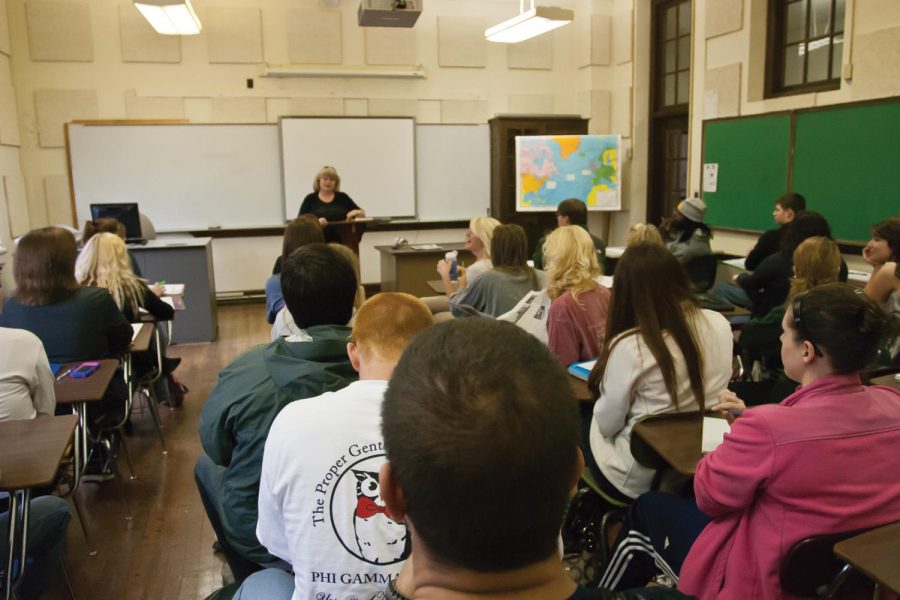Students’ position in classroom may have no effect on grades, faculty says
February 16, 2012
Choosing a desk in class might seem like a simple choice, but, to some, it is a choice that can be vital to professors’ perceptions of students. To others, it might have a different effect-or none at all.
Director of Career Planning and Development Melissa Medlin said students’ seat choices illustrate their character.
“Any student who sits in the front shows initiative,” she said.
Medlin said she does not know there is any evidence that shows “front-seaters” do better than other students.
Medlin said letting professors get to know you-your career goals and other aspirations-gives the professor a better base to draw from when asked to give his or her impression.
Some students said they haven’t seen many differences based on seat choice.
“I haven’t noticed being treated differently by professors for sitting in the back,” said Jeremy Bates, sophomore psychology major.
Bates said the only negative aspect of sitting in the back is not seeing the board, but it is really not an imperative issue.
Asking questions and making sure he knows the information are ways Bates ensures not being able to see the board does not get in his way.
“I make sure to make eye contact and show the professors that I’m listening, interested and following what they are saying,” Bates said. “I think that is the difference.”
Some professors attribute the formation of professor perceptions of students to other factors.
“Personally, I have found that it is not seating preference that influences student-faculty interaction, but whether I have had the opportunity to previously interact with the student and learn their name,” said Dr. Jerri Bullard, UNA professor of sociology.
Bullard said she feels professors do not view students differently based on seat location.
“A number of factors can influence where a student sits in a classroom, including availability of seats, having a class right before, parking issues, friendships as well as personal preferences,” Bullard said. “Understanding this, I don’t feel that instructors view a student differently if they sit in the front of the room versus the back.”
Dr. Ryan Zayac, UNA assistant professor of psychology, said research-based evidence proves the differences between ‘front-seaters’ and ‘back-seaters.’
“The majority of research shows that students that sit in the front of the classroom generally perform better than those students who sit toward the back,” he said. “The literature suggests that students who sit toward the front of classrooms typically attend and participate in class more frequently, and earn higher grades than
students that sit in the back of the classroom.”
Psychological research on the subject has been conducted for over 60 years, according to Zayac. The difference between individual professors may affect their perceptions of students’ class position, though.
“I’ve had students in my courses participate and earn high grades who have sat in the back,” Zayac said. “And I’ve had students who have sat in the front and never contributed to the class discussion-so, I wouldn’t say that I have any specific perceptions about students based on where they sit.”












